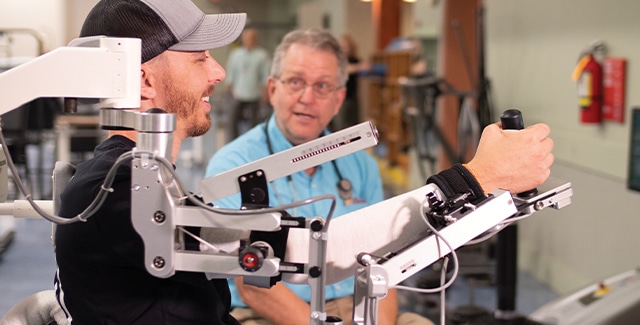More than 1.7 million people in the U.S. receive a diagnosis of sepsis each year, according to the Cleveland Clinic. Sepsis is a life-threatening condition that occurs when the body’s response to an infection damages its tissues and organs.
“Sepsis is a medical emergency and should be treated as one,” Dr. Ruthri Goodwin, medical director for Madonna Rehabilitation Hospitals’ cancer program, said. “Early identification and treatment are critical to improving patient outcomes.”
Signs of Sepsis
Goodwin noted infections that lead to sepsis most often start in the lungs, urinary tract, skin or gastrointestinal tract. As such, the following are common symptoms of sepsis:
- Fast heart rate
- Fever or hypothermia
- Low blood pressure
- Urinary issues, including reduced urination or urge to urinate
- Skin rashes
- Confusion or disorientation
- Low energy or decreased consciousness
- Abdominal pain
- Shortness of breath
- Chills
Sepsis Diagnosis
As a teacher of continuing education classes on early sepsis identification at Madonna, Goodwin recommended all health care providers use a set of criteria, known as qSOFA or quick sequential organ failure assessment when they suspect a case of sepsis.
An individual may have sepsis if they have at least two of the following qSOFA criteria:
- Low blood pressure: Systolic blood pressure reading of less than 100 mmHg.
- High respiratory rate: Respiratory rate faster than 22 breaths per minute.
- Glasgow coma scale: A score of 15 or less on this scale determines an individual’s level of consciousness.
“It’s important to know your patient’s baseline when possible,” Goodwin cautioned. “Be aware of other variables that could potentially affect the qSOFA score, such as dementia or baseline low systolic blood pressure. Alternately, if your patient’s systolic blood pressure is typically in the 200s and now it’s 140 with no other explanation, this should prompt further evaluation.”
Goodwin also endorsed using NEWS—the National Early Warning Score—to detect sepsis early. Clinicians give patients an aggregate score based on their respiration rate, oxygen saturation, systolic blood pressure, body temperature, pulse rate and level of consciousness. The risk of death from sepsis rises with the score level.
Sepsis Treatment
Once diagnostic tests and blood cultures confirm a sepsis case, rapid treatment is essential.
“Evidence-based medicine points to better outcomes when IV antibiotics are administered within one hour of presentation,” Goodwin said. “Controlling the source of infection with antibiotics and intravenous fluids is the foundation of treating patients with sepsis.”
Once the source of the infection is controlled, clinicians should continue to monitor the patient’s vital signs, including hourly urine output and oxygen levels. Additionally, supportive care may be appropriate depending on the severity of the case. With prompt diagnosis and care, a large number of individuals with mild sepsis can recover.





